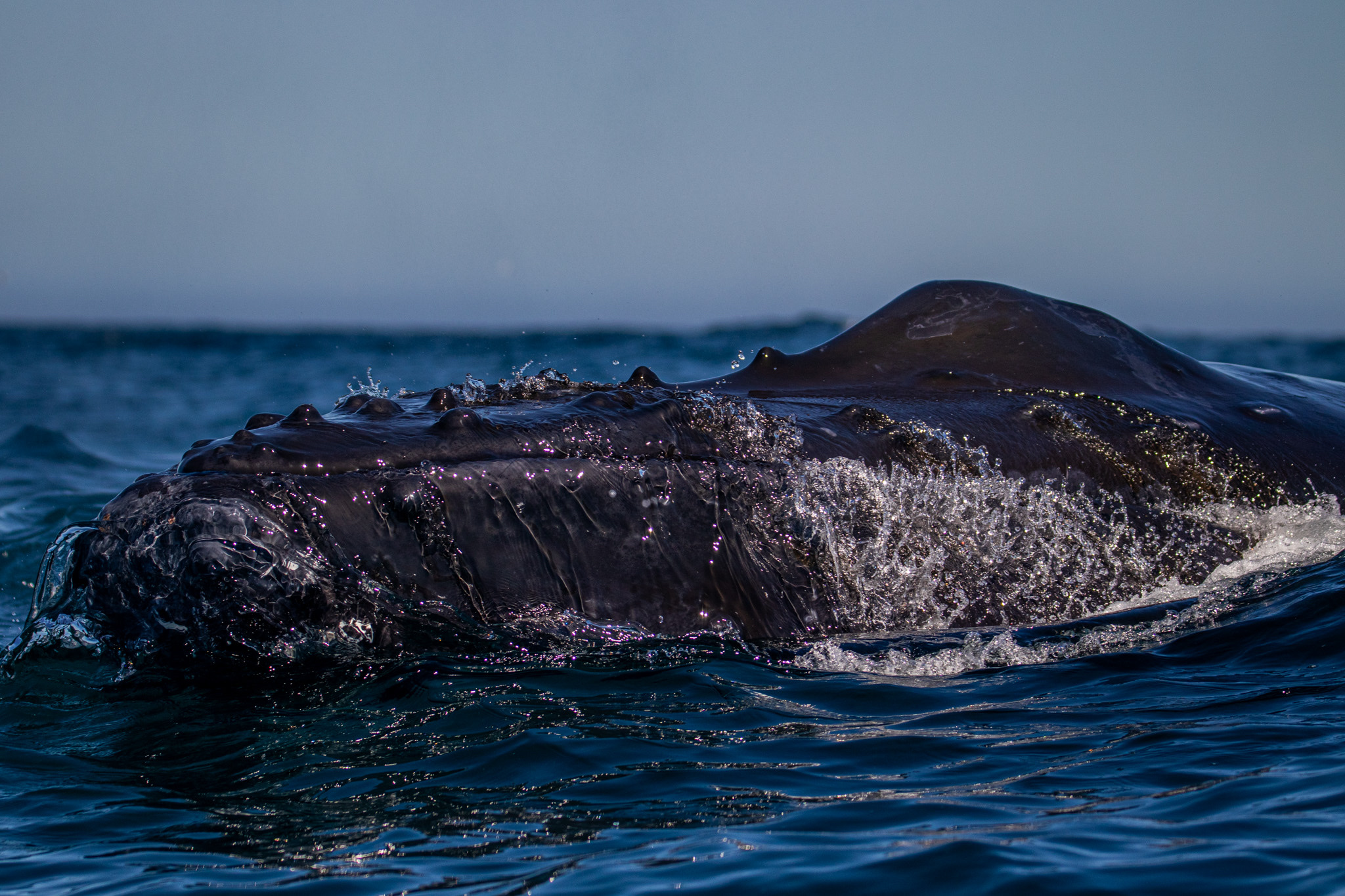Marine mammals come in all shapes and sizes, from surfboard-stealing sea otters to giant humpback whales making Fibonacci spirals. However while the former is famously cute and fluffy with thick fur, do whales have hair? We take a closer look at the skin of these ocean giants.
Do All Whales Have Hair?
The short answer is yes – however, as always, it’s a bit more complicated. There are around 90 species of cetaceans (the group including whales, dolphins, and porpoises), and not all of them have hair, according to Whales.Org.
Whales and other cetaceans are mammals despite their watery lifestyle, and while it may seem unusual, they share certain characteristics unique across all mammals (let’s not get into monotremes right now) regardless of habitat. One of those characteristics is hair. Some whales and dolphin species have hair where land mammals have whiskers.
Do baleen whales have hair?
Whales are split into two groups, largely based on what is inside their mouths. One group, the baleen whales, have baleen bristles that help filter and sieve their prey of small krill and plankton from the ocean.
Baleen whales include humpbacks, fin, sei, and bowhead species, and they have been found to have hair follicles – even if they don’t have visible hair. These follicles are found along the jawline, chin, and on top of the head, these whale species may have 30 to 100 hairs, writes the Blue Ocean Society.
Humpback whales (Megaptera novaeangliae) have tubercles, large visible bumps typically on the head, and inside each tubercle is a hair follicle. Some adult humpbacks still have hairs growing from them.

The bumps on the top of the whale’s head sometimes contain a single hair.
Toothed whales have hair
The other group of whales are the toothed whales, which as the name suggests possess teeth rather than baleen plates. Whale calves in some species of toothed whales are born with hair along their snouts and lose it quickly after birth.
Do dolphins have hair?
One cetacean species – the Amazon river dolphin, also known as the boto (Inia geoffrensis) – has stiff hairs on its beak throughout its life. They are thought to aid the dolphins in finding prey at the bottom of murky rivers.
Why Do Whales Have Hair?
No one knows for sure why whales have hair. Some suggest it could be a leftover trait from when whale ancestors were living on land. Others suggest that the nerves around the hair follicles help the whales in some way, and could be used to sense changes in the water such as pressure, helping whales detect shoals of fish or changes in the currents. There is some research showing that Minke whales have been observed using their chin hairs to detect air and ice interfaces in cold Antarctic waters.
A study in 2015 found that bowhead whales are typically hairless, apart from patches of more than 300 hairs on the tops of their heads and their chins. This makes them the hairiest of all modern cetaceans. The team found that the hairs closer to the whales’ blowholes were thicker than the hairs on their chins and rostrums. The placement of these hairs leads the team to believe these hair patches may have specialized functions.
Given that young whales are often born with hairs, these could be used in communication between the calves and their mothers during feeding.
All “explainer” articles are confirmed by fact checkers to be correct at time of publishing. Text, images, and links may be edited, removed, or added to at a later date to keep information current.
Source Link: Do Whales Have Hair?